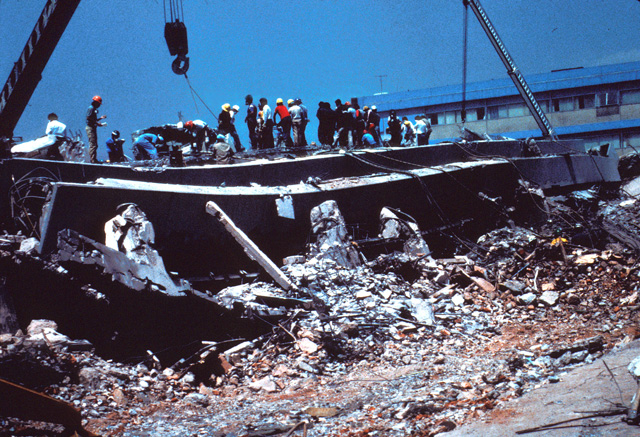20 April 2023–Staff in public and private hospitals in Mexico City are likely to follow well-established and reinforced earthquake early warning (EEW) protocols for evacuation, according to an ongoing study.
Overall, staff are likely to follow the protocols especially when they are “reinforced with drills that help practice the correct protective action,” said Sandra Vaiciulyte of Universidad Nacional Autónoma de México. She discussed her research at the Seismological Society of America (SSA)’s 2023 Annual Meeting.
In the study, there have been “no accounts of injuries of patients and staff because of the particular reaction by staff,” Vaiciulyte said. “In general, the correct protective action—following the protocol—has great impact in safeguarding people from injuries and protecting lives in hazardous situations.”
Vaiciulyte and her colleagues wanted to learn more about how EEW protocols have impacted the vulnerable hospital population, since Mexico City introduced its public earthquake warning system in 1991.
The research team is carrying out in-depth interviews to find out what the existing EEW protocols are for hospitals and how staff and patient populations respond to these protocols and earthquakes.
Hospital EEW protocols can include a variety of protective actions, including sheltering in a secure place in a building, evacuation procedures, drop-cover-hold on behavior and turning off equipment where necessary.

A hospital’s specific protocols are shaped by several elements, said Vaiciulyte. “So far, the determining factor for the preparedness to respond to an earthquake or EEW has shown to depend on the individual hospital management capacity as well as the geographic location of the hospital, which determines to what extent the hospital is exposed to earthquake consequences” depending on their seismic micro-zones.
Other factors such as building structure, which can control how easy it is to evacuate, and the hospital’s purpose—whether it has a large intensive care unit population, for instance—affect a specific hospital’s protocols.
“These existing differences also affect the challenges with developing and maintaining the protocol,” Vaiciulyte said. “For example, for children’s hospitals ingress—entering the hospital from the outside—during an earthquake or EEW is more likely by the parents who are worried about their children.”
The study aims to include four hospitals, but “the hospital staff experiences are often more diverse, stemming beyond just one or several earthquake events within the specific studied hospital,” she noted. “That means that additional accounts of their experience in other hospitals are also taken into consideration.”
Obtaining permission to talk to staff can be challenging for some hospitals, so the research team is supplementing its survey with consultations with civil protection and EEW providers in Mexico.
The researchers did find some instances where staff members evacuated against protocol or raised their voices in an anxious or hysterical way, “which often has shown to be related to that individual staff member’s negative experience in an earthquake in the past, or a lower threshold of handling stressful situations,” said Vaiciulyte.
“These are anecdotal accounts, but nonetheless important in thinking about the potential strategies in helping hospital staff to deal with their own and patients’ reactions, especially when many individuals in Mexico City have been through several devastating earthquakes,” she added.
Vaiciulyte has also studied how people behave in fire events, noting some similarities like an initial hesitation about what to do, nervousness when cues like ground shaking or the smell of smoke occur, and the potential for injuries when evacuating. “In both situations, the response time is very limited before the effects of the hazard can be felt,” she said.
